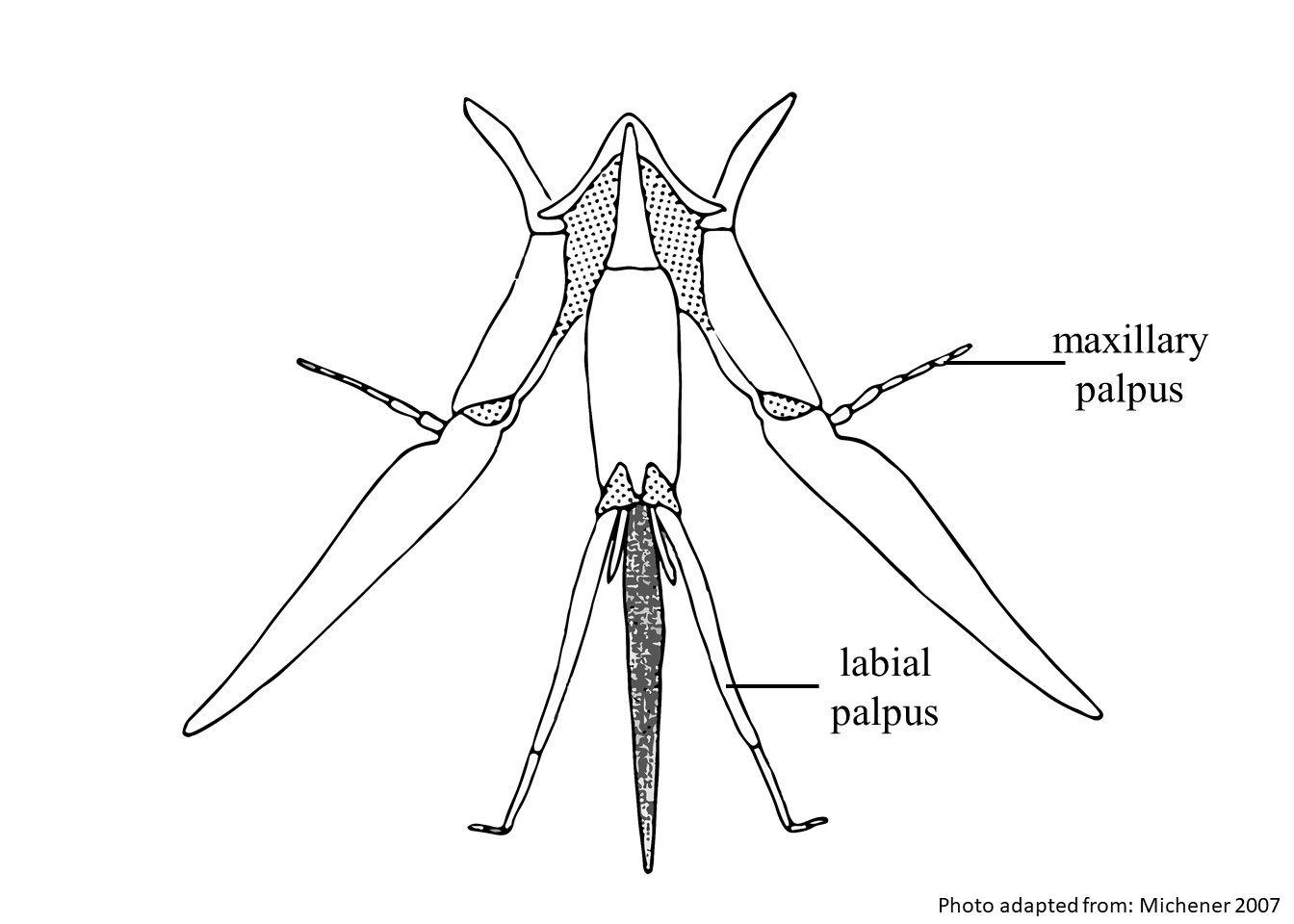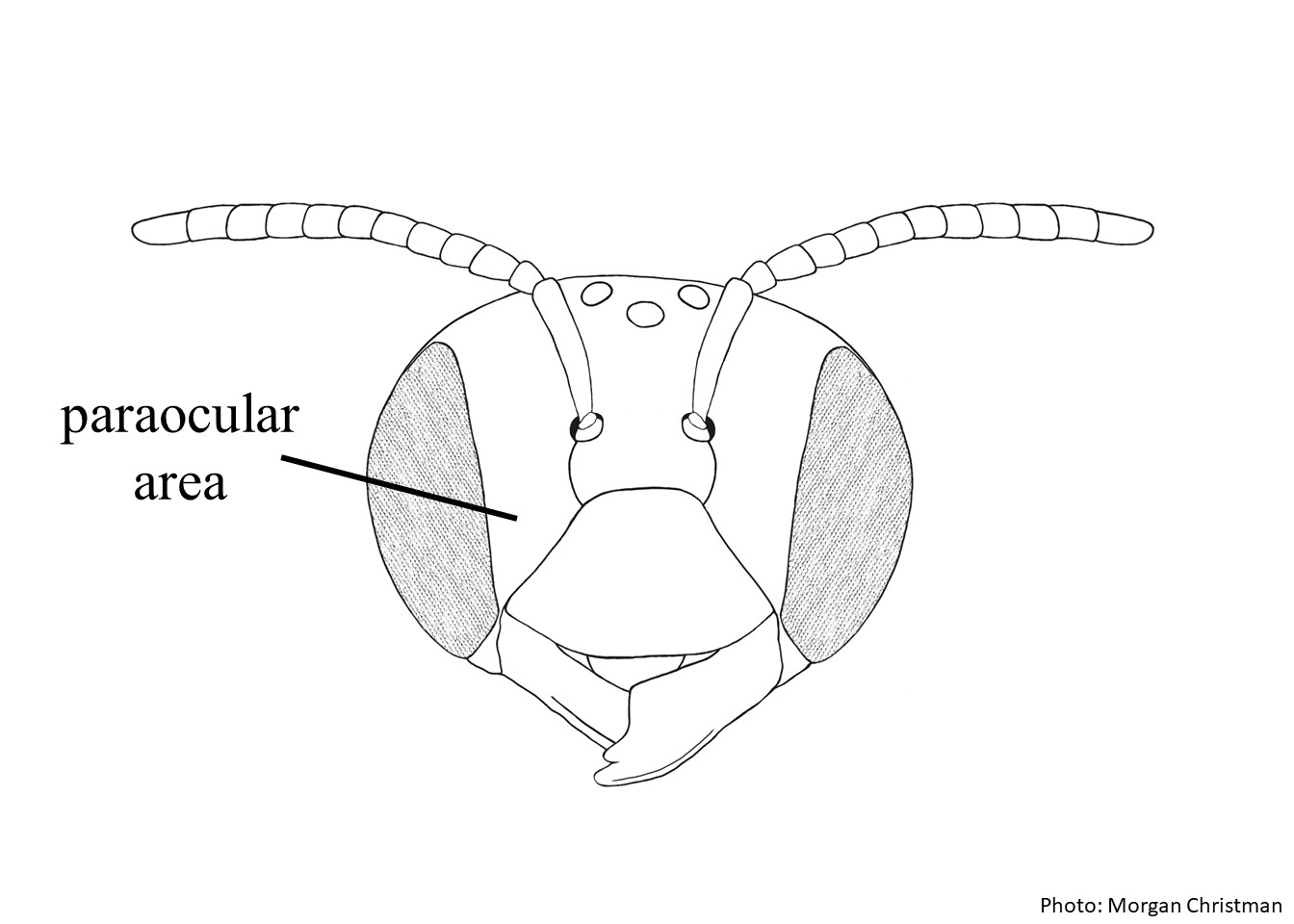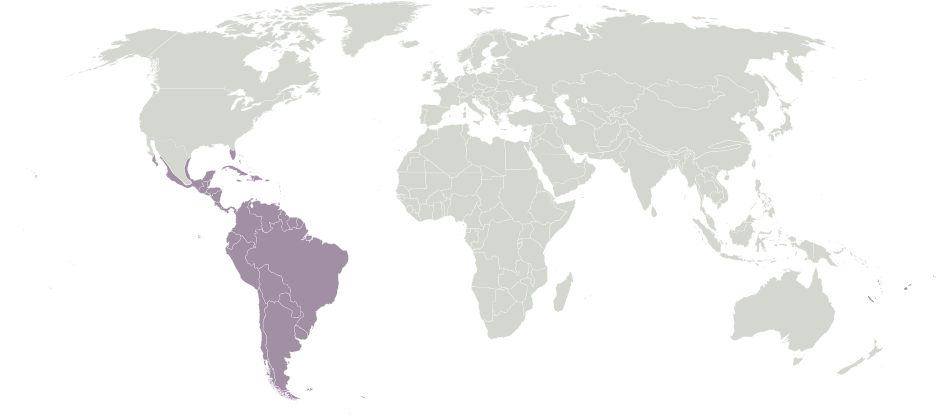Family: Apidae
Subfamily: Xylocopinae
Tribe: Ceratinini
Genus: Ceratina Latreille, 1802
Subgenus: Crewella Cockerell, 1903
Common name: small carpenter bees
Ceratina (Crewella) are characterized by having strongly punctured integumentintegument:
a tough, protective outer layer
with a weakly metallic coloration, although some species have pale maculations limited to the face, pronotal lobes, and legs. Their body length varies from 6–13 mm (Michener 2007Michener 2007:
Michener, C.D. 2007. The Bees of the World (2nd ed.). Johns Hopkins University Press, Baltimore and London, 953 pp.).
(modified from Hirashima 1971aHirashima 1971a:
Hirashima, Y. 1971. Subgeneric classification of the genus Ceratina Latreille of Asia and West Pacific, with comments on the remaining subgenera of the world (Hymenoptera, Apoidea). Journal of the Faculty of Agriculture Kyushu University 16 (4): 349ndash;375.; Michener 2007Michener 2007:
Michener, C.D. 2007. The Bees of the World (2nd ed.). Johns Hopkins University Press, Baltimore and London, 953 pp.)
 6-segmented.
6-segmented. with yellow or white maculations.
with yellow or white maculations.Ceratina (Crewella) may be confused with Ceratina (Calloceratina) and Ceratina (Neoclavicera) because of the presence of a strong carinacarina:
a clearly defined ridge or keel, not necessarily high or acute; usually appears on bees as simply a raised line
in the pronotumpronotum:
a collar-like segment on the thorax and directly behind the head; extends down the sides of the thorax toward the first pair of legs. They can be separated from Neoclavicera because this latter has a single apicalapical:
near or at the apex or end of any structure
spur on the fore and mid tibiaetibiae:
the segment of the leg, between the femur and the tarsus and a wax plate only present on S2S2:
the plates on the underside of the abdomen, often abbreviated when referring to a specific segment to S1, S2, S3, S4, S5, S6, S7, or S8
 . They can be separated from Calloceratina by lacking basalbasal:
. They can be separated from Calloceratina by lacking basalbasal:
originating at the foundation of a structure
carina on the outer side of the posterior tibiatibia:
the segment of the leg, between the femur and the tarsus, having a darker metallic coloration, and maxillary palpipalpi:
sensory appendages part of the labium and maxilla
 always with six segments (compared to 5 or 6 in Calloceratina). In addition, some species of Crewella have an unusually long tongue (Michener 2007Michener 2007:
always with six segments (compared to 5 or 6 in Calloceratina). In addition, some species of Crewella have an unusually long tongue (Michener 2007Michener 2007:
Michener, C.D. 2007. The Bees of the World (2nd ed.). Johns Hopkins University Press, Baltimore and London, 953 pp.).
Guimarães et al. (2008) found three different species of Ceratina (Crewella): C. maculifrons, C. gossypii, and C. asuncionis visiting the flowers of Jacaranda oxyphylla (Bignoniaceae) in patches of Cerrado vegetation, in Brazil. Krug et al. (2012) also found in Brazil at least two undetermined species of Ceratina (Crewella) visiting flowers of Oxalis cytisoides (Oxalidaceae) in a semi-deciduous forest in Santa Catarina state. Paz and Pigozzo (2013) reported that Ceratina (Crewella) is the main pollinator of Ipomoea eriocalyx (Convolvulaceae), even though this plant undergoes self-fertilization.
There are no records of the nesting behavior of Ceratina (Crewella), but it is assumed that they nest in hollowed pits, branches, or stems, like other members of the genus Ceratina.
Ceratina (Crewella) contains 31 species (Ascher and Pickering 2020Ascher and Pickering 2020:
Ascher, J.S. and J. Pickering. 2020. Discover Life bee species guide and world checklist (Hymenoptera: Apoidea: Anthophila). https://www.discoverlife.org/mp/20p?see=Carinulaamp;name=Megachileamp;flags=subgenus :; Moure 2012Moure 2012:
Moure, J.S. 2012. Xylocopini Latreille, 1802. In Moure, J. S., Urban, D. and Melo, G. A. R. (Orgs). Catalogue of Bees (Hymenoptera, Apoidea) in the Neotropical Region - online version. Available at http://www.moure.cria.org.br/catalogue. Accessed Apr/07/2019 .).
There are no known invasives.
Ceratina (Crewella) occur in parts of Central and South America, from Costa Rica south to Bolivia, Paraguay, and Argentina (Michener 2007Michener 2007:
Michener, C.D. 2007. The Bees of the World (2nd ed.). Johns Hopkins University Press, Baltimore and London, 953 pp.).

Distribution map generated by Discover Life -- click on map for details, credits, and terms of use.
Ascher, J.S. and J. Pickering. 2018. Discover Life bee species guide and world checklist (Hymenoptera: Apoidea: Anthophila). https://www.discoverlife.org/mp/20p?see=Crewella&name=Ceratina&flags=subgenus: Accessed 09–2020.
Guimarães, E., L.C. di Stasi, and R. De C. Sindrônia Maimoni-Rodella. 2008. Pollination biology of Jacaranda oxyphylla with an emphasis on staminode function. Annals of Botany 102 (5): 699–711.
Hirashima, Y. 1971. Subgeneric classification of the genus Ceratina Latreille of Asia and West Pacific, with comments on the remaining subgenera of the world (Hymenoptera, Apoidea). Journal of the Faculty of Agriculture Kyushu University 16 (4): 349–375.
Krug, C., C.I. Silva, and I. Alves-dos-Santos. 2012. Interaction between bees and the tristylous flowers of Oxalis cytisoides Mart. & Zucc. (Oxalidaceae). Psyche (2012): 8 pp.
Michener, C.D. 2007. The Bees of the World (2nd ed.). Johns Hopkins University Press, Baltimore and London, 953 pp.
Moure, J.S. 2012. Xylocopini Latreille, 1802. In Moure, J. S., Urban, D. and Melo, G. A. R. (Orgs). Catalogue of Bees (Hymenoptera, Apoidea) in the NeotropicalNeotropical:
biogeographic region that includes South and Central America, the Caribbean Islands, southern Florida, and the southern Mexican lowlands Region - online version. Available at http://www.moure.cria.org.br/catalogue. Accessed Apr/07/2019.
Region - online version. Available at http://www.moure.cria.org.br/catalogue. Accessed Apr/07/2019.
Paz, J.R.L. and C.M. Pigozzo. 2013. Reproductive biology of Ipomoea eriocalyx (Convolvulaceae): a species restricted to eastern Brazil. Rodriguésia 64 (4): 705‒716.